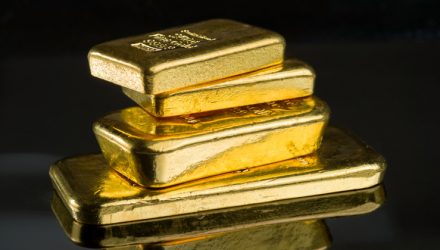Gold ETFs may provide a way for investors to manage downside risks and optimize outcomes for the year ahead.
On the recent webcast, How Bright Can Gold Shine in 2019?, Mike Arone, Chief Investment Strategist, SPDR State Street Global Advisors; George Milling–Stanley Vice President, Head of Gold Strategy, State Street Global Advisors; and Juan Carlos Artigas, Director, Investment Research, World Gold Council, considered investment options that can help diversify investor portfolios and generate uncorrelated returns from traditional stocks and bonds.
Gold demand remains robust as an alternative diversifier to traditional assets. In the first quarter of 2019, we saw a 7.0% year-over-year increase in demand for gold, a 48.9% rise in demand for gold-related ETFs and a 67.9% jump in demand among central banks.
While some may point out that gold demand increased due to heightened risks and a shift to safety, gold demand has been driven by both tactical and strategic investments. Periods of growth have been supportive of jewelry, technology and long-term savings. Market downturns historically have often boosted investment demand for gold. The price of competing assets such as bonds, currencies and other assets, may influence investor attitudes towards gold. Lastly, capital flows, positioning and price trends may also affect gold’s performance.
Looking ahead, the strategists on the webcast argued that investors should keep an eye on financial market instability, monetary policy, the U.S. dollar and structural economic reforms, which can all affect gold price moves.
Continued market uncertainty, the expansion of protectionist policies and higher likelihood of a recession could make gold attractive as a hedge. We have witnessed rising momentum in safety bets like gold as a means to safeguard wealth in times of uncertainty.
Gold may face headwinds from higher interest rates and continued dollar strength, but these effects could potentially be dampened as the Federal Reserve takes a more neutral stance or even implement rate cuts while other central banks move to normalize monetary policy. With the weaker economic outlook as a result of increased trade barriers, the Fed is considering cutting interest rates ahead, which would further support the gold outlook as both an inflation hedge and its inverse correlation to the strength of the greenback.
Additionally, key markets like India and China may continue to support demand for gold in jewelry, technology and as means of savings. Consumer demand, notably in emerging markets, will take the lead, especially due to economic growth that would increase discretionary money and structural reforms in these economies.
As a way to diversify a traditional stock and bond portfolio, George Milling–Stanley, Vice President and Head of Gold Strategy at State Street Global Advisors, highlighted a number of gold-related ETF strategies, including the SPDR Gold Shares (NYSEArca: GLD), SPDR Gold MiniShares Trust (NYSEArca: GLDM) and SPDR Long Dollar Gold Trust (NYSEArca: GLDW).
GLD is the largest and most heavily traded gold ETF, offering strategic, long-term investors relatively low entry and rebalancing costs, plus robust optionality.
GLDM is designed to offer the potential benefits of a long-term, strategic allocation to gold — for less. With an expense ratio of just 18 basis points, GLDM offers the pure buy and hold investor a lower share price and lower holding costs.
Lastly, GLDW seeks to track the daily performance of a long position in physical gold and a short position in a basket of non-US currencies. The ETF is designed to offer the potential benefits of long exposure to gold and the US dollar.
For more gold investing trends, visit our gold category page.
